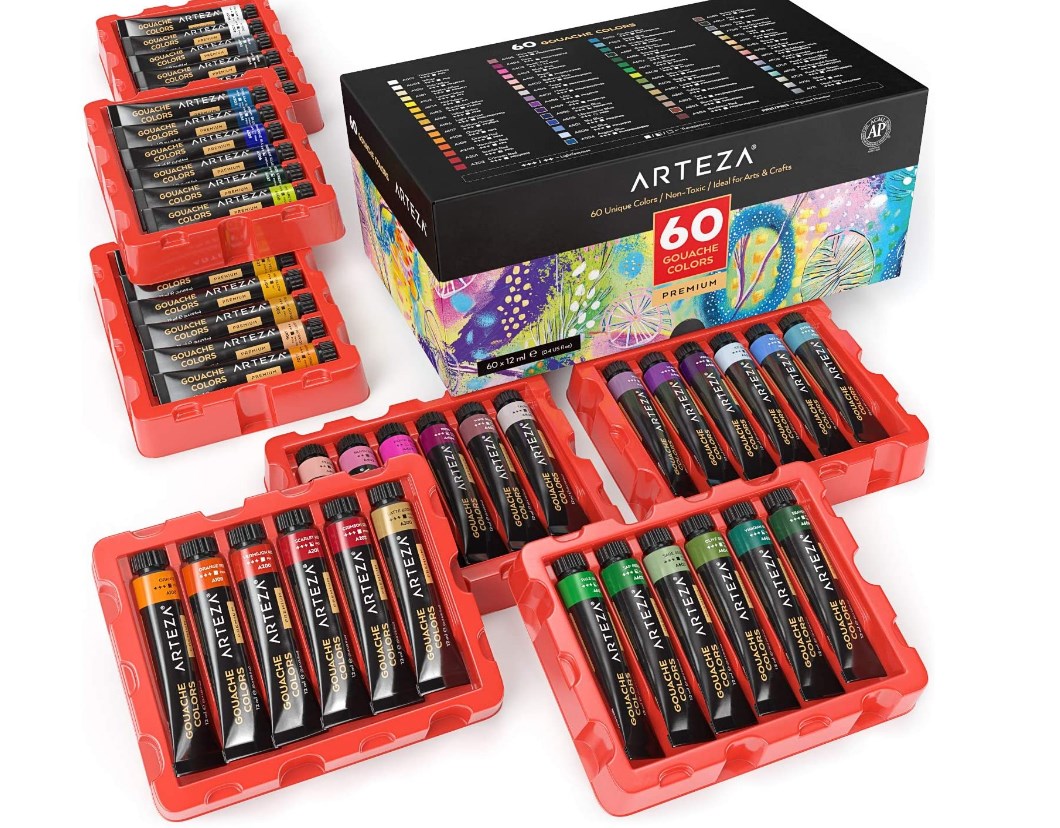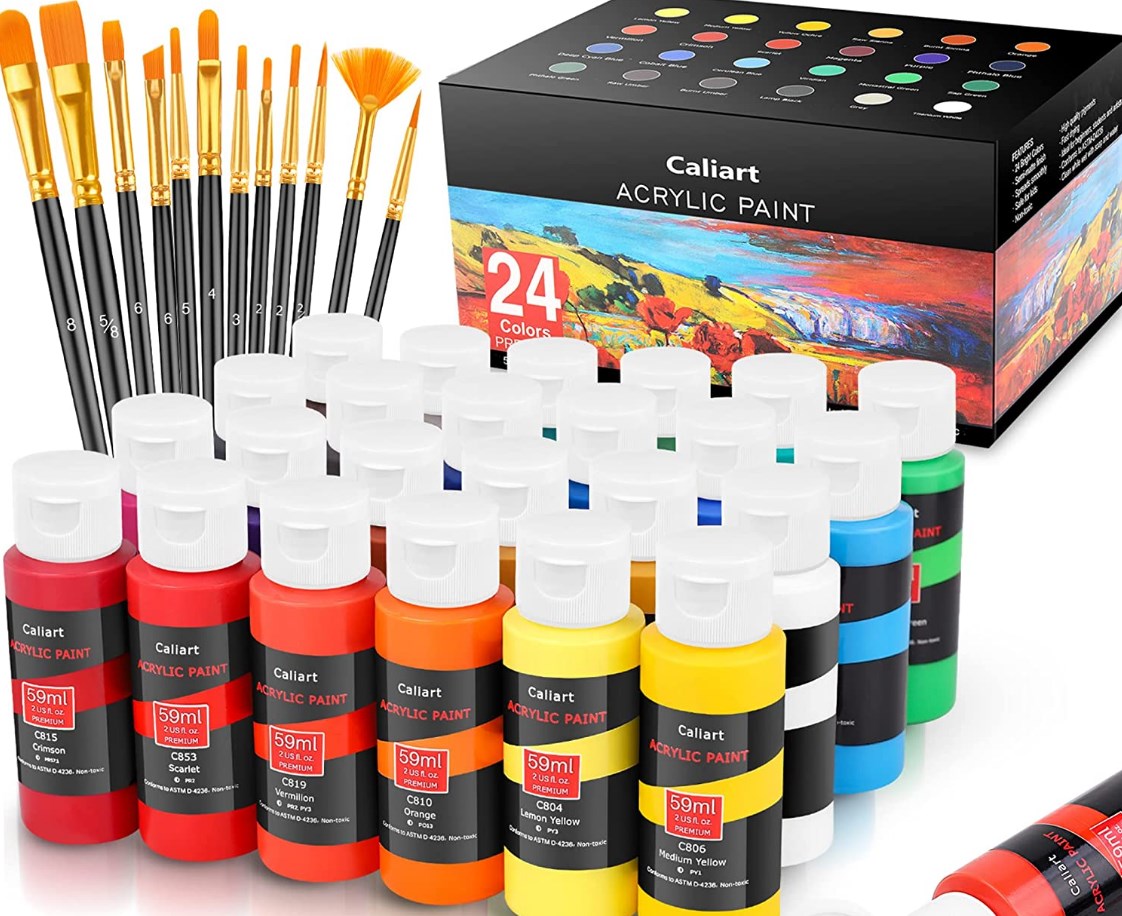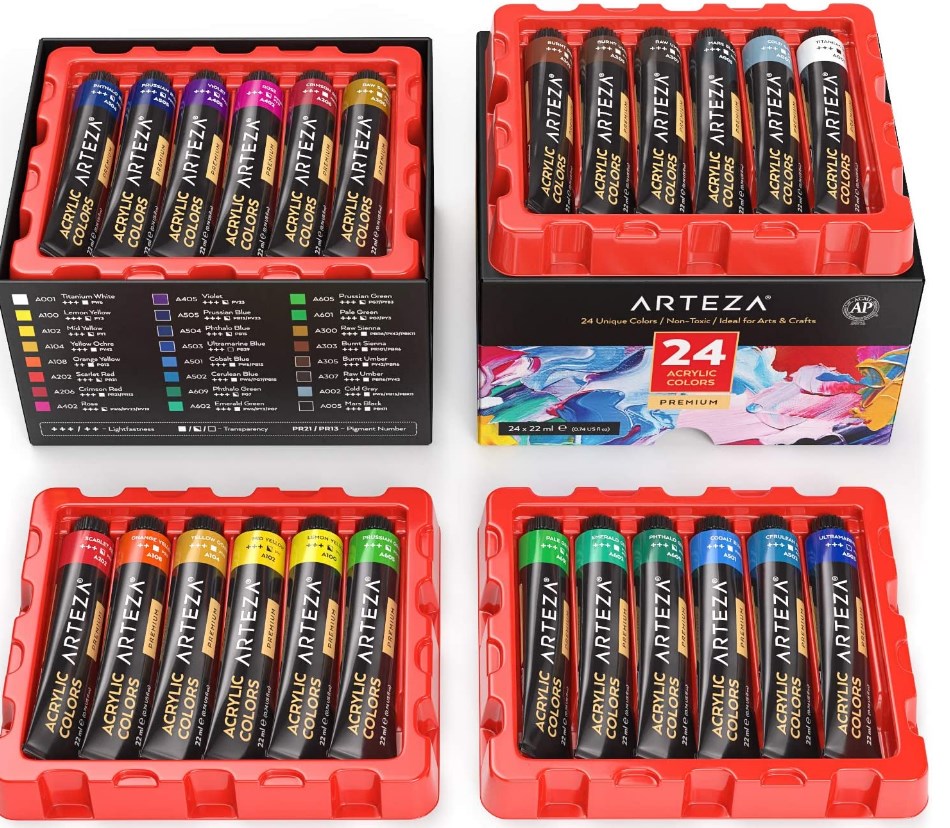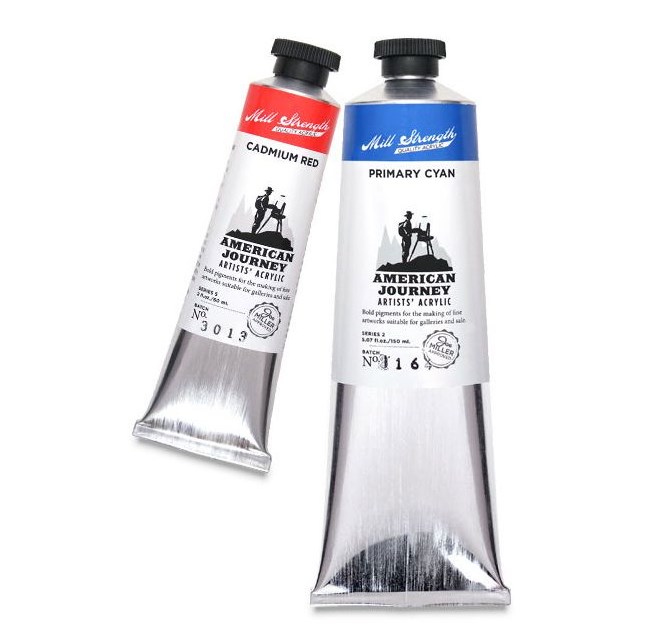- How to Find the Best Spray Paint for Metal - December 3, 2021
- Creative Wood Burning Ideas: To Bring Back Your Inspiration! - November 20, 2021
- Best Iron for Perler Beads Guide: To to Enjoy This Craft Even More! - November 20, 2021
When I travel, I always try to visit an art gallery. This is because I love walking through the halls while admiring the skill and creativity of artists from all time periods and locales. It is a wonder to me what artists can do with a brush and some precisely selected pigments. They know exactly what is needed to create texture, or movement, or shading that will allow others to peer into their personal world of imagination and share a thought.
To break this down more, artists know exactly what type of painting medium to use to create a world on canvas where others can fully grasp the story they are telling. Whether it was acrylic, watercolor, or oil pastels, by selecting the correct type of paint, artists have gifted the world with storms and smiles, shrouds and sunsets, and simple pleasures.
But, how did they know that one paint would work better for their picture than another? Surely, it was a learned skill or knowledge passed from one expert to another. Today, we can relish the fact that those artists who have gone on before us have left us with the knowledge we need to select the right paint for any and all projects.
If you are an artist that has been interested in trying out other painting mediums, but you don’t have time or money to waste, then let Craft & Stitch help you. Our guides are written to help artists of all experiences and skill levels succeed in whatever they do. In this guide, I will bring to light the differences between gouache and acrylic paint. Not only will I compare and contrast these types of paint against each other, but I will also attempt to show you what can be done with each and what the pros and cons of each one are.
Let’s get ready to dive into the wonderful world of art and learn some new skills for future projects.
The Main Differences Between Gouache vs Acrylic
The Main Differences Between Gouache vs Acrilic are:
These two types of paint differ in the following ways:
- Gouache paint is water-soluble even after it has dried; whereas, Acrylic paint cannot be reactivated by water once it has dried.
- Gouache is made from a pigment, a binder, and additives; whereas, acrylic is made from a pigment suspended in a plastic latex.
- Gouache paintings should be sheltered behind glass so it doesn’t succumb to the elements; whereas, acrylic is durable enough to use on interior and exterior walls.
- Gouache dries flat, soft, matte, and opaque; whereas, acrylic dries glossy and can be layered to produce surface textures.
- Gouache works best on paper; whereas, acrylic can be used on nearly any type of painting surface, e.g., glass, paper, plastic, wood, etc.
- Gouache dries fairly quickly, but not so quickly that there is no time to blend colors; whereas, acrylic dries very fast, which means that blending colors is difficult and may require the use of a paint retarder to slow down the drying process.
All about Gouache

Although its origins date back to nearly a millennium ago, Gouache paint really became a popular choice for artists in the late nineteenth and early twentieth centuries when renowned artists such as Matisse, Degas, and Picasso selected Gouache for their works. With so many famous and talented creatives opting to use such a paint, the art world pulled Gouache out of relative obscurity and into its accepted circle. Up to this point, it had been the star of mostly illuminated manuscripts and Persian miniatures.
The main reasons artists enjoy using gouache in their artwork are that it is opaque when it dries, it dries quickly, it can be combined with water to make it more transparent, and it is water-soluble even after it dries. These characteristics add up to a paint that is thick and smooth in consistency and is brightly colored.
Recommended Products
If you are interested in trying gouache paint for your next project, these are some of the best options on the market:
Winsor & Newton Designers’ Gouache

This is a reasonably priced set so that beginners can play around with it without feeling as though they are wasting money. It comes in all the right colors, and this brand is known for blending very well.
Arteza Gouache Paint Set

For those who love to use a lot of different colors, this is a great option. This set offers sixty brilliant colors that are smooth and creamy. Plus, there are a few tubes that come in metallic. All this comes with a box with organizing trays and a reasonable price tag.
Holbein Artist Gouache Set

If you are a more experienced artist, then you may want to try a higher-end set of paints. This brand is known for making Gouache Paint that is highly pigmented and opaque. Customer reviews agree that it is worth the money.
Pros of Gouache
- It is an inexpensive paint
- It dries quickly
- It dries with a matte finish
- It dries with an opaque finish, which means layering is easy
- It can be used on thin paper since it has a thick consistency and doesn’t bleed easily
- Mistakes are easy to cover or correct with it
- Colors do not bleed together
- Dark colors can be painted onto light colors without ruining the sharpness of either
Cons of Gouache
- It is a difficult medium to learn
- It requires white paint to lighten other colors
All about Acrylic

This type of paint is considered synthetic since it is made with plastic latex. While this may seem a little questionable for health reasons, most acrylic paint is also non-toxic and safe for everyone to use.
The question that really should be asked is whether or not it is worth using? The answer to this is a resounding yes. It is worth using. Acrylic paint is extremely easy to use, and it can be used on a variety of painting surfaces and in a variety of painting techniques.
Recommended Products:
For artists who are interested in trying out acrylic paint, these are some of the best brands you can find:
Caliart Acrylic Paint Set

This is a very reasonably priced set when you consider all that you get. Twenty-four different colors of non-toxic paint is a fantastic way to dip your toe into this painting medium. After over 5,000 customer reviews and a 4.8-star rating, it is evident that this is a great deal.
Arteza Acrylic Paint Set

This brand is famous for its quality crafting products, and this set of acrylic paint is no disappointment. Beginner and intermediate artists will appreciate the color selection, the quality of the paint, and the excellent pricing of the set.
American Journey Artists’ Acrylic

This is the brand you may want once you have practiced using acrylic paint for a few years. It is geared toward professional artists or those who want to improve their painting skills. These tubes are sold individually, and therefore, are a bit pricier, especially if you want a variety of colors.
Pros of Acrylic
- It dries very quickly
- It dries with a glossy finish
- It dries permanently and is durable
- It is easy to use, even for beginner artists
- It can be removed from clothing with turpentine
Cons of Acrylic
- Some acrylic paints contain toxins
- It cannot be reactivated once it dries
- It is difficult to alter or cover mistakes
FAQs
Question: Can Gouache and Acrylic be Used Together?
Answer: Yes, they can. A hybrid of these two types of paint is called either “acryla gouache” or “acrylic gouache.” This hybrid features the best characteristics of gouache and acrylic in one place. Here is a list of acrylic gouache’s characteristics that might have you trying it out soon:
It does not reactivate with water
It dries quickly
It dries with a creamy and flat finish
It layers over other colors without blending into each other
Question: Should Artwork Made with Gouache be Sealed Once Completed?
Answer: No, they should not. Sealing any artwork made with gouache will cause the paint to react to the sealant, and the colors will begin to blend together. Eventually, the artwork will be ruined.
Question: Should Artwork Made with Acrylic be Sealed Once Completed?
Answer: Yes, sealing will help to preserve this type of artwork. Use something like MinWax Protective Finish to create an isolation coat, then when this layer has dried, apply a sealant layer of varnish.
Question: Which Paint Colors Should Artists Always Have in Stock?
Answer: There are several theories out there that explain why every artist should have at least these 3, 6, or 12 colors in their studio at all times. That’s right. You don’t need dozens of tubes of paint to complete your projects. Of course, minimizing your color selection means that you must learn how to mix colors on your own to make the colors you need.
If you’re game to mix and blend and build your own palette of colors, let’s talk about these three color theories in more detail.
The Three Color Palette
Blue paint
Red paint
Yellow paint
This is probably the best palette to use to learn how to mix colors. It’s very basic and will only create so many colors, which is actually a good thing. You don’t want to get overwhelmed when you are developing a new skill set. So, if you are new to color mixing, definitely start here.
The Six Color Palette
Blue paint
Burnt Sienna paint
Green paint
Purple paint
Red paint
Yellow paint
Once you have mastered the Three Color Palette, you should add a few more colors and experiment with them all together. With only these six colors, you will gain a huge variety of shades to use on your paintings. For those who are familiar with color mixing, this is a must-try.
The Twelve Color Palette
Blue paint
Burnt Sienna paint
Dark Green paint
Gray paint
Light Green paint
Light Yellow paint
Medium Yellow paint
Red paint
Ultramarine paint
Umber paint
White paint
Yellow Ochre paint
After gaining some familiarity with color mixing, you can add more paints to your palette. These twelve colors are recommended because they will work together to create nearly all the shades you could want in your artwork. Artists who are comfortable with color blending and mixing should definitely use this palette.
Question: What Are Some Famous Works of Art Done in Gouache and Acrylic?
Answer: Perhaps, you’re like me, and you want to visit an art gallery for inspiration. These are wonderful places to learn more about artists, their artwork, and how they both impacted history and/or our present day. If you’re up to traveling, go see these great pieces of art in person, but if travel is not for you at the moment, at least look at them online.
Gouache:
Edgar Degas’ Deux danseuses at the Shelberne Museum
William Trost Richards’ Moonlit Landscape at the National Academy
Adolph Menzel’s The interior of the Jacbskirche at Innsbruck at the National Gallery of Art
Acrylic:
Andy Warhol’s Campbell’s Soup Cans at the Museum of Modern Art
Ellen Fuller’s Wood 1
Question: Is It Possible to Learn How to Paint with Gouache or Acrylic by Taking Online Classes?
Answer: Yes, online classes offer students the ability to learn nearly any craft or hobby from the comfort of their homes. If you are interested in learning how to paint better with either gouache or acrylic but don’t want to risk your health at this time, give the internet a go. With online classes, you can safely mix with society while maintaining a safe social distance.
Gouache Painting Classes:
Philip Boelter
Romica Spiegl-Jones
Skillshare
Acrylic Painting Classes:
Skillshare
Udemy
Wondrium
The Final Touches
My intention for writing this article is to inspire artists of all skill levels to immerse themselves in the world of art. My hope is that everyone who reads this article will take some time to experiment with different types of paint and colors within those types. Not only do I hope for personal experimentation, but I also hope for personal enrichment.
When the art of painting is a part of your life, you should share your passion for it with others and allow them to share theirs with you. Get out and view some local art galleries, talk to local artists, or take a painting class at your local community center or college. Try something new so you will discover the comfort of being outside your comfort zone. If you’re really anxious to push your creativity, travel the world and meet artists from other cultures and worldviews that will challenge you more. Rather than difficult challenges, these are all opportunities to drive your creativity to do even greater things.
For more great things in the world of artistic painting, check out some of our other guides to finding the best paint supplies. We can also inspire your creativity with our tutorial guides. With Craft & Stitch as your guide, there’s always time for crafting.
Research Citations

